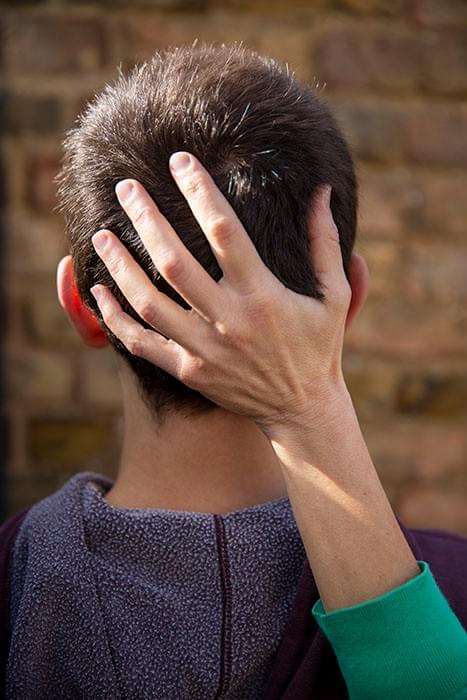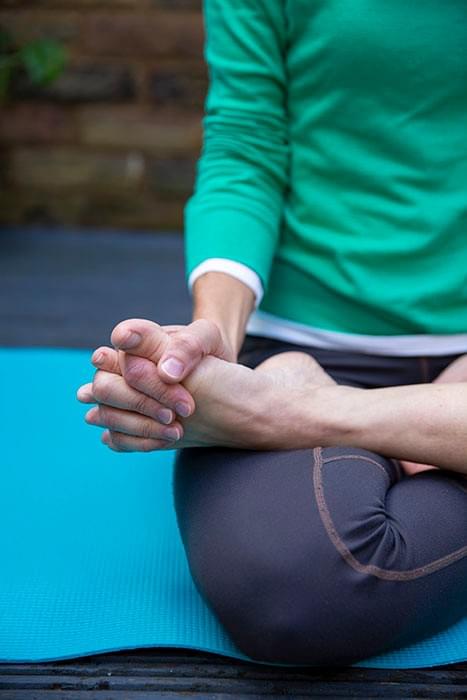
My Approach
My approach has evolved over 30 years to reflect modern biotensegrity and neuroplasticity principles. It is mostly based on Scaravelli inspired Yoga and the somatic practice of Body-Mind Centering®, which are often interwoven in my Somatic Yoga sessions.

What is Scaravelli inspired yoga?
Scaravelli inspired Yoga is a subtle, yet transformational approach to Yoga and movement, which is guided by principles now found in
modern biomechanics (the way the body is designed to move) and biotensegrity (how the body functions as an integrated network of tensile structures). Thanks to its gentle nature, it is suitable for most people, especially those who are drawn to a deeper, more internal practice, as well as those with pre-existing imbalances or restrictions.In this form of Yoga we are encouraged to do less in order to feel more. We use smaller, deeper, slower movements to bypass our habitual patterns and restore more natural (and efficient) motion. As our holding patterns are etched in our nervous system, this process of undoing will also have an effect on our mind. Our parasympathetic (i.e. relaxation) response, rather than fight or flight, will again become our baseline, from which more options are open to us, including creative expression.
There is no forcing or imposition in Scaravelli inspired Yoga, on the contrary the intrinsic intelligence of the body is actively encouraged to come to the surface, inform and free our movements.
The level of internal awareness that is fostered makes it a very mindful, meditative practice. Each movement or posture tends to be explored in detail, from the point of view of internal sensations and responses, so that an attitude of listening to the body is developed over time.

What is Body-Mind Centering®?
Body Mind Centering® (BMC®) is a somatic practice which is based on embodied anatomy. The word ‘somatic’ refers to the body
as we perceive it through our internal awareness or our felt sense, as opposed to the body as something we are imposing our ideas or theories upon.
In somatics, the underlying attitude is one of internal listening, from which an external movement (or other forms of self expression) might emerge, as opposed to a brain-led intention to mechanically place the body into a movement or position with little awareness or (sometimes) enjoyment, just because somebody’s told us to. Ultimately, we’re trying to give the body a voice, rather than superimposing a system onto it that might not be considering its deeply felt needs.What drew me to BMC® in particular is the combination of this freedom of expression and the structure provided by the embodiment of human anatomy. This goes beyond the usual exploration of the myofascial (muscles and fascia) and skeletal systems to include organs, fluids, glands, ligaments, neural pathways, as well as embryology, developmental movement, reflexes and more. By embodying these components of our internal landscape with curiosity and ease, we gradually discover aspects of ourselves that can guide us towards more integration, support, strength, fluidity and balance.
Retracing our origins, both from an evolutionary and a developmental point of view, can be particularly helpful in terms of shifting our habits and repatterning our body and mind, as we reconnect with a deeper intelligence which exists beyond the conditioning that has been etched in our nervous system over the years. Also, Body Mind Centering® places a particular focus on the relational aspects of our practice, i.e. how our internal landscape and attitudes affect our interactions with others.

As a Somatic Movement Educator (SME), my role is to facilitate and support your internal explorations by using movement, touch, visualisation/somatisation, vocalisation, as well as verbal suggestions. These would be drawing on the potential qualities and functions of different components of our body, which can give rise to different ways of moving, breathing, expressing, being with oneself and others. My main area of interest is nervous system regulation and the ability to learn the language of the body that BMC® provides is, in my experience, central to increasing nervous system capacity and processing/releasing stored survival stress and developmental trauma over time. In other words, we are addressing, through a deeper connection with our body, the potential causes of anxiety, fatigue, overwhelm, and many chronic health issues.
*Body-Mind Centering® and BMC® are registered service marks of Bonnie Bainbridge Cohen, used with permission




